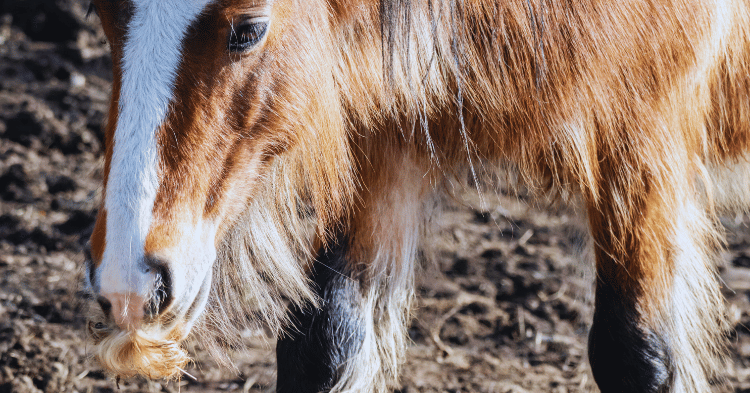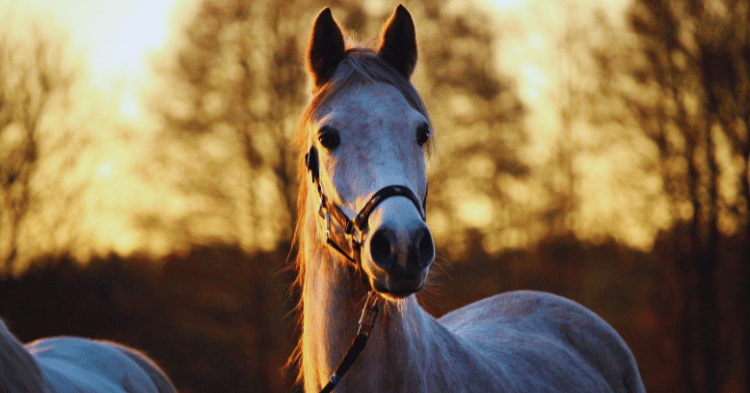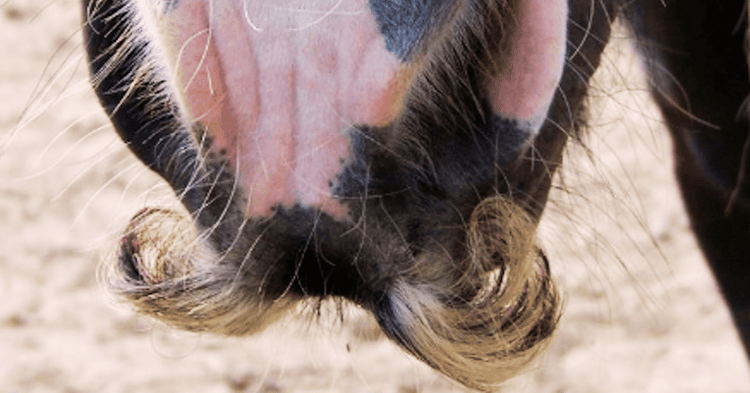Horses are majestic, powerful creatures that have captivated human imagination for centuries. Yet, beneath their sleek coats and graceful gallop lies a world of peculiarities that most of us have never considered. Can horses grow mustaches? It’s a question that may seem absurd at first glance, yet it opens the door to some of the most astonishing and quirky facts about these noble animals.
Imagine the surprise of seeing a horse sporting a curly, distinguished mustache, reminiscent of an old-timey gentleman. It’s not just a playful thought—it’s a reality for certain breeds.
But why do some horses develop this unusual feature while others don’t? Is it purely aesthetic, or does it serve a deeper purpose? In this exploration of equine oddities, prepare to discover the whimsical and practical reasons behind one of nature’s quirkiest traits. Let’s dive in and unravel this follicular mystery.
Understanding Horse Mustaches

What are Horse Mustaches?
Horse mustaches are quite a fascinating phenomenon, seen predominantly in certain horse breeds such as the Gypsy Vanner. Notably, this breed can grow mustaches because of their particularly hairy nature. These mustaches develop due to the significant hair gene in Gypsy Vanners, which results in an abundance of hair that includes magnificent mustaches.
The distinctive mustache appearance in these horses is mostly due to the excessive facial hair that some horses, like Gypsy Vanners, naturally possess. With long, splendid manes and tails, these horses sometimes have hair sprouting out of their snouts, giving them the unique mustachioed look.
The Science Behind Horse Mustaches
The science of horse mustaches ties closely to seasonal changes and how they influence hair growth in horses. The retinal reception of changing environmental light information is transmitted to the hypothalamus, affecting melatonin secretion. This, in turn, impacts mammalian physiological responses to photoperiod changes, including coat growth (PubMed Central).
Artificially extending the photoperiod, such as using blue light administered via head-worn light masks, can suppress melatonin production. This suppression influences reproductive activity and regulates hair coat development in horses (PubMed Central). The timing and duration of such light therapy are crucial for effectively managing equine coat growth and responding to treatment variances attributable to factors like breed, management, ambient temperature, and hair cycle phases.
Moreover, hormones play a vital role in hair growth cycles. Melatonin, prolactin, and daylength are key factors controlling hair follicle cycles in horses. Melatonin suppresses prolactin, which is, in turn, suppressed by daylight. This hormonal interaction is particularly relevant for managing conditions like hypertrichosis in horses with Pituitary Pars Intermedia Dysfunction (PPID) by extending day length.
Thus, the ability of horses, especially breeds like Gypsy Vanners, to grow mustaches is a fascinating interplay of genetics and environmental factors. For further readings on unique equine traits, check out our articles on can horses eat bananas, can horse sleep standing up, and can horses eat watermelon.
The Role of Mustaches in Horses

Mustache Growth Cycles
Horse mustaches follow specific growth cycles, typically growing in the winter and shedding in the summer. This pattern is likely influenced by seasonal changes in light and temperature. The mustache helps horses forage for food in colder months. It can guide a horse through grass while feeding, similar to how an octopus uses its tentacles (Indie88).
Photoperiod, or the length of day and night, plays a crucial role in these growth cycles. Exposure to varying amounts of light affects melatonin secretion in the horses’ hypothalamus, influencing their physiological responses. Changes in photoperiod can trigger growth or shedding of the mustache and coat. This light-dependent process helps horses adapt to seasonal changes.
| Season | Growth Status |
|---|---|
| Winter | Mustache Growth |
| Summer | Mustache Shedding |
Benefits of Horse Mustaches
Horse mustaches are more than just a quirky feature; they offer several benefits:
- Foraging Assistance: The mustache aids their ability to detect and forage for food. It acts as a tactile sensor that helps horses feel their way through grass and other vegetation.
- Environmental Adaptation: The cyclical growth and shedding of the mustache help horses adapt to changing environmental conditions, offering extra sensory input when visibility is lower during winter months.
Understanding these benefits highlights the importance of mustaches in maintaining the well-being and adaptability of horses. For more fascinating insights into equine behavior and physiology, visit additional articles such as do horse produce milk and can horse see in the dark.
| Benefit | Description |
|---|---|
| Foraging Assistance | Helps horses detect and forage for food |
| Environmental Adaptation | Aids in adjusting to seasonal changes |
For additional tips on managing horse coats and mustaches, learn more about photoperiod and coat growth in our section on managing horse coats and mustaches.
Horses with Exceptional Mustaches
The Gypsy Vanner Breed
Gypsy Vanners are renowned for their striking appearance, characterized by their long, flowing manes, tails, and feathered legs. This breed is particularly noteworthy for its ability to grow mustaches, a trait stemming from their tendency to produce copious amounts of hair. Their genetic predisposition to excessive hair growth not only adds to their aesthetic appeal but also enables them to sport impressive mustaches (Indie88).
Gypsy Vanners are a compact and sturdy breed, originally developed by the Romani people in Great Britain. They were bred to pull ornate caravans, requiring both strength and beauty, attributes which they exhibit to this day.
| Feature | Description |
|---|---|
| Origin | Great Britain |
| Purpose | Pulling caravans, aesthetic shows |
| Key Characteristics | Abundant hair, feathered legs, robust build |
| Mustache Growth | Prominent in the winter months |
Characteristics of Gypsy Vanners
Gypsy Vanners possess several distinctive features that set them apart from other horse breeds. Their significant hair gene not only facilitates the growth of mustaches but contributes to their overall elegant appearance.
- Manes and Tails: They have long, silky manes and tails that often reach down to the ground, enhancing their majestic look.
- Feathered Legs: Their legs are adorned with abundant feathering, adding to their unique and regal appearance.
- Facial Hair: Some Gypsy Vanners can grow facial hair that resembles mustaches. These may vary in style, with some appearing as handlebar mustaches, poofy mustaches, or petite French mustaches (Indie88).
| Characteristic | Description |
|---|---|
| Manes and Tails | Long and silky, often reaching the ground |
| Feathered Legs | Thick, flowing hair around the lower legs |
| Mustache Styles | Handlebar, poofy, French |
| Body Build | Compact and sturdy, with a graceful appearance |
The Gypsy Vanner’s unique traits extend beyond their outer beauty. They are known for their gentle temperament, making them suitable for a variety of equestrian activities and roles, from show horses to family pets.
Understanding the peculiarities of the Gypsy Vanner can provide valuable insights into horse grooming and care. For more information on managing horse coats, refer to our article on photoperiod and coat growth and strategies for handling excessive hair growth.
Managing Horse Coats and Mustaches
Effective management of horse coats and mustaches is crucial for keeping your equine companion healthy and comfortable. Understanding the factors influencing coat growth and the appropriate strategies for handling excessive hair growth is essential.
Photoperiod and Coat Growth
Photoperiod, or the length of daylight, plays a significant role in the hair growth cycles of horses. Artificial extension of photoperiod suppresses melatonin secretion, activating moulting in various animals, including horses. Blue light administered via head-worn light masks effectively suppresses melatonin production in horses, affects reproductive activity, and regulates hair coat development. This approach is particularly useful for managing conditions like hypertrichosis in horses with PPID.
The timing of light therapy initiation is crucial for effectively managing equine coat growth, as individual responses vary based on breed, management, ambient temperature, and hair cycle phases. Monitoring these factors allows for optimal results in coat management.
Strategies for Handling Excessive Hair Growth
Managing excessive hair growth in horses requires a combination of grooming techniques and environmental adjustments. Here are some effective strategies:
- Regular Grooming:
- Brushing: Use a combination of soft and hard brushes to remove loose hair and dirt.
- Clipping: Regularly clip long hair, especially during warmer months, to keep horses cool and clean.
- Light Therapy and Photoperiod Management:
- Blue Light Masks: Adopt blue light masks to regulate melatonin production and manage excessive hair growth (PubMed Central).
- Daylight Extension: Extend day length using artificial lighting to control the hair follicle cycle and reduce excessive growth.
- Diet and Supplements:
- Nutrition: Ensure a balanced diet rich in essential nutrients to maintain a healthy coat.
- Supplements: Use high-quality supplements tailored for hair and hoof health, particularly for horses with PPID (Kentucky Equine Research).
- Medical Treatments:
- Pergolide: Administer pergolide to improve hypertrichosis and increase shedding in horses with PPID.
By employing these strategies, horse owners can effectively manage their horse’s coat and mustache, ensuring their equine companion remains healthy and comfortable throughout the year. For further insights into related topics, visit our articles on can horse sweat and do horse hooves grow.

